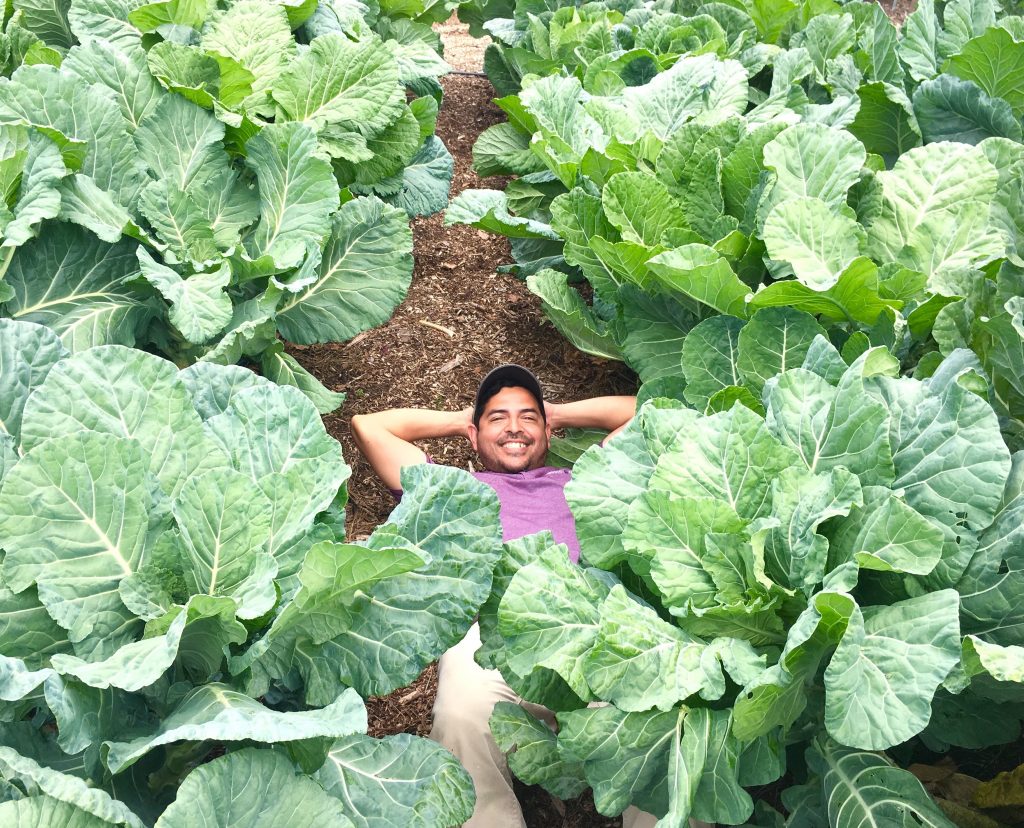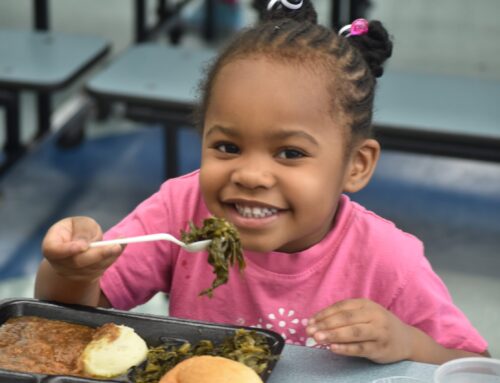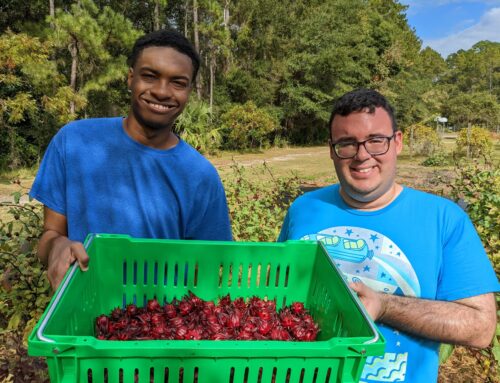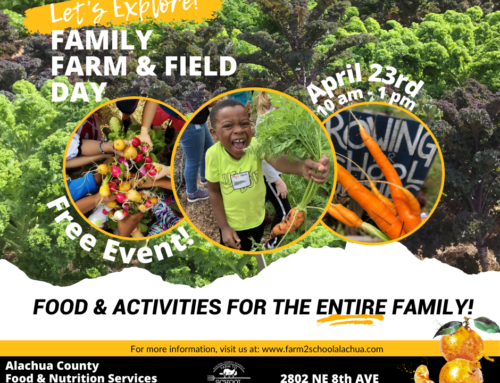
Daniel is not an elf. These collards were HUGE.
Nothing says fall like planting collards. This year, in addition to our regular collard crop, we’ll be participating in the 2020 Collard Trial, organized by the Heirloom Collard Project. We are among 200 other participants trialing three different varieties and collecting data on seed viability, sprouting times, harvest period, and TASTE! We sowed our seeds last week and are watching with excitement at these babies grow.

Collard Trial: Day 4
Hoping to get a jump start on the season, we also planted collard plugs this week, purchased from our local Feed and Seed store. These will be harvested for Fresh Fruit and Vegetable bags to go home with students learning digitally and in school meals.
Besides, reminding us that fall is coming (tonight’s supposed to be 15 degrees cooler than last night!), collards remind just about every southerner of their grandmother. Smelling collards boiling with a turkey neck or ham hock was part of our childhood – stinky then, but now reeking of childhood happiness and home. Washing collards, boiling collards, eating collards, and finally dipping the cornbread in the “pot liqueur,” the savory juice left at the bottom of the pot, seems like it’s part of our DNA.
Apparently collards go way back in the history of a number of cultures. We know the ancient Greeks grew and ate them and probably introduced them to conquered lands throughout Europe. Southerners learned from enslaved Africans to tenderize greens by boiling slowly with a piece of meat for flavoring. We are looking forward to continuing the tradition of growing, eating, and loving collard greens. What a good way to reconnect with our own personal history, our neighbors, and our students – in the garden, over the stove, and at the table.




